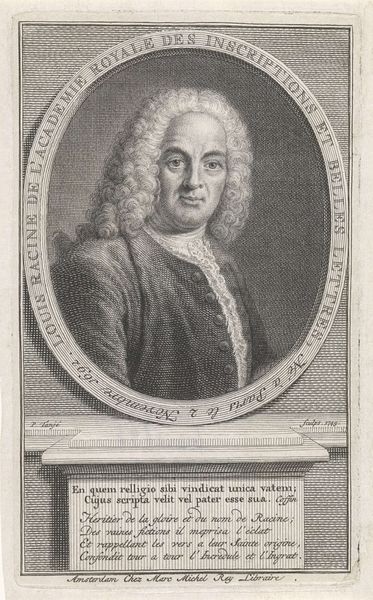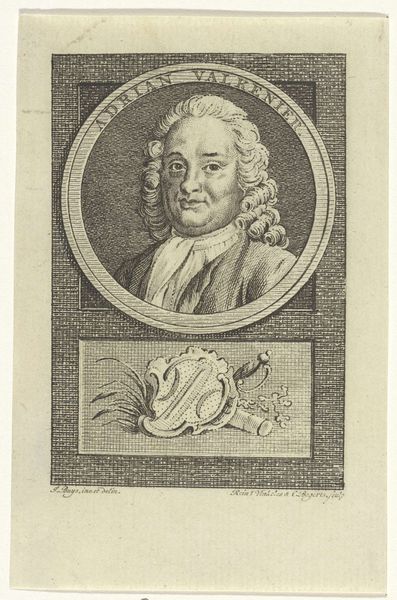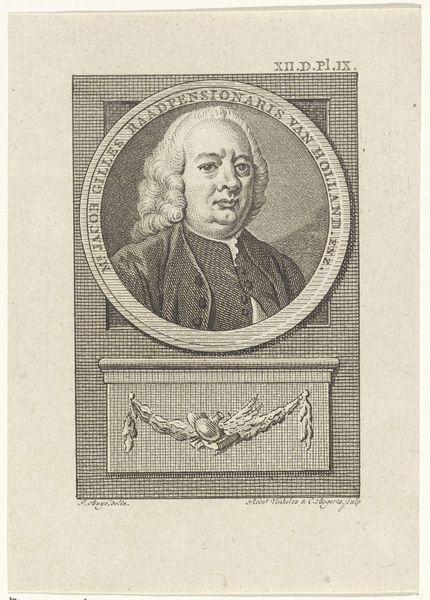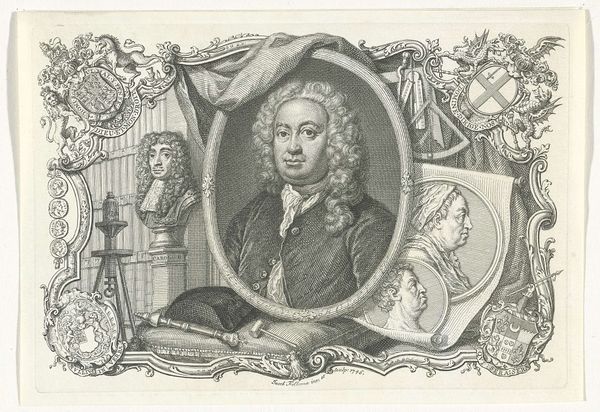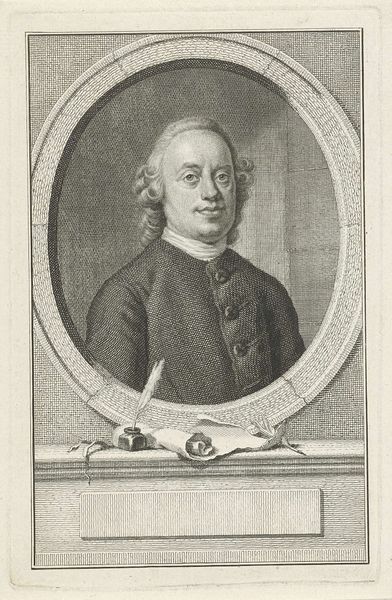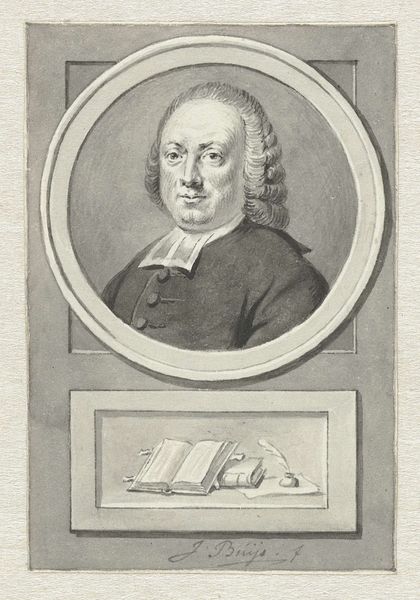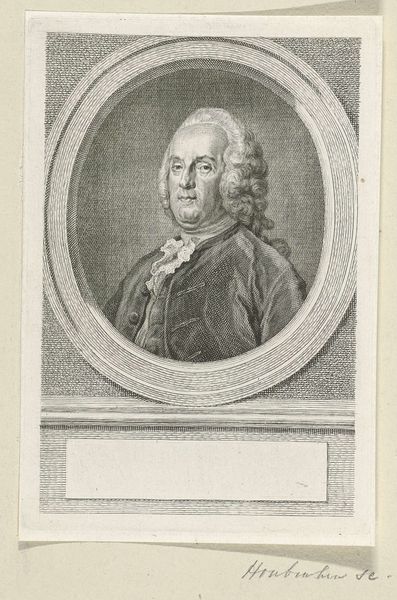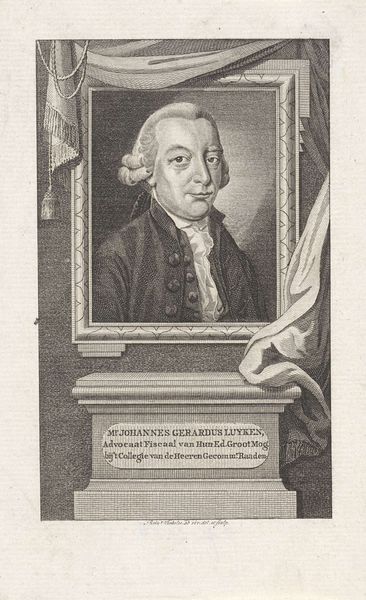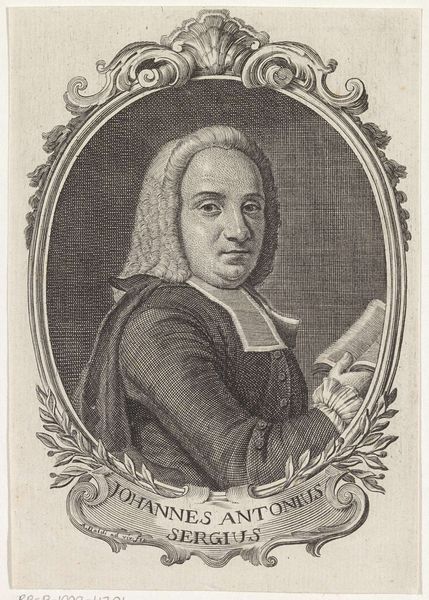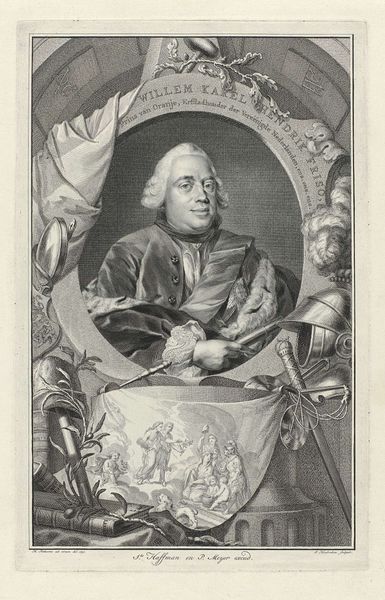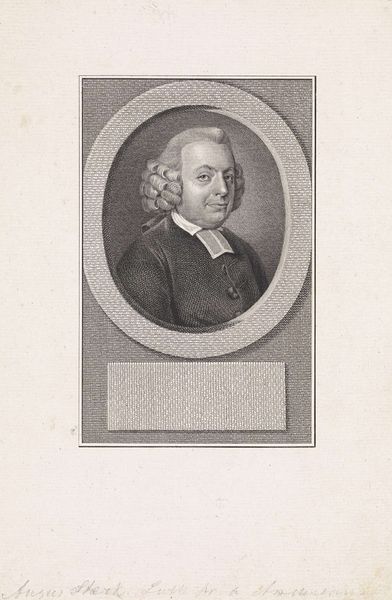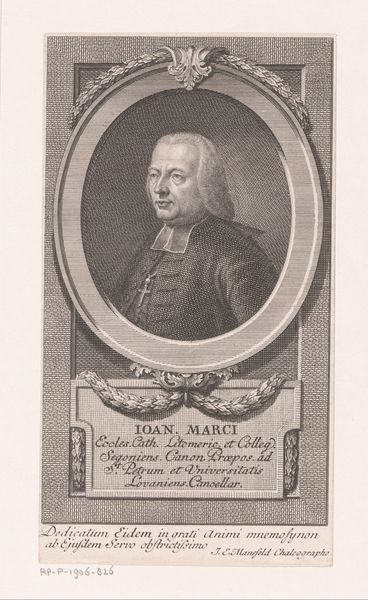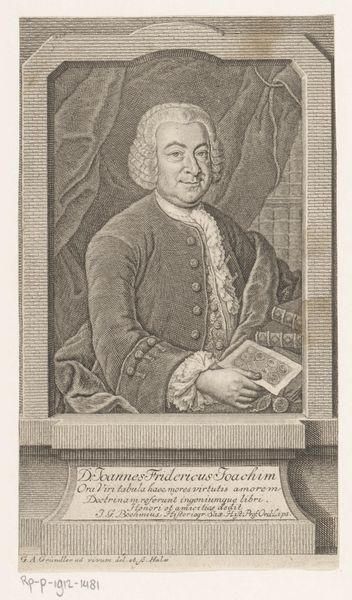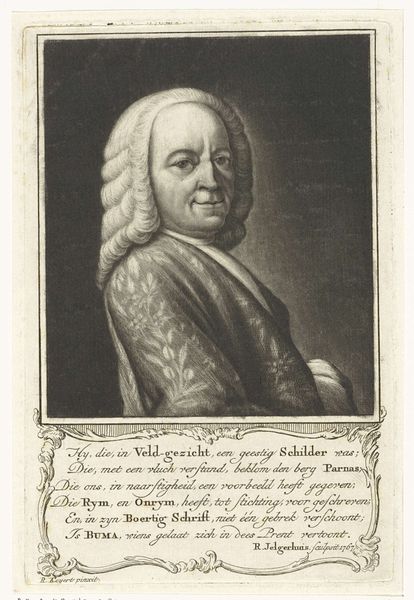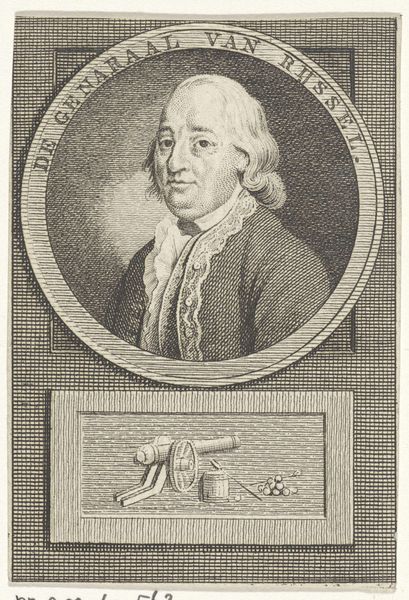
print, engraving
#
portrait
#
baroque
# print
#
northern-renaissance
#
engraving
Dimensions: height 166 mm, width 109 mm
Copyright: Rijks Museum: Open Domain
Curator: This is Pieter Tanjé’s 1751 engraving, "Portraits of Tibout Regters, Jan ten Compe, and Jan Palthe,” now residing in the Rijksmuseum collection. Editor: What immediately strikes me is its rather academic and somewhat austere mood. The monochrome engraving feels quite formal and distant, don't you think? Curator: Structurally, it presents an interesting visual arrangement, placing three portraits within a seemingly architectural framework. Note the varying shapes: one rectangular, one circular, and the third more organically framed. How does that formal layering strike you? Editor: I read this through the lens of Enlightenment portraiture and the construction of masculine identity. These are clearly men of prominence, presented almost as specimens—their individuality subdued beneath the powdered wigs and conventional attire. The arrangement could indicate social hierarchy or maybe Tanjé trying to assert status in representing fellow male artists of the period? Curator: The precision in the engraving technique creates a captivating texture and almost photorealistic effect. The artist’s use of light and shadow defines not just the individuals, but enhances the symbolic dimensions of these representations as well. What does the tonal range signify? Editor: Beyond pure aesthetics, the gray monochrome underscores a social landscape lacking vivid diversity. Though skillfully executed, there is an element of perpetuation embedded. We can interpret this artwork not merely as representation but the codifying of exclusive access. Who gets immortalized, and who remains outside the frame? Curator: I appreciate your focus on sociopolitical undertones! Perhaps in this tightly composed piece Tanjé attempts something of an archival act that blends technical precision and emotional reticence. Editor: Exactly—recognizing how portraiture here can perform complex tasks, either explicitly or unintentionally, and ultimately helps reveal cultural and historical layers in this rendering.
Comments
No comments
Be the first to comment and join the conversation on the ultimate creative platform.
